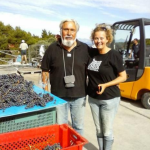The tourist season of 2017 had a remarkable impact on the increase in consumption of ice-cream.
Croatia experienced a record consumption of ice cream this year. In the first ten months of this year, production of ice cream, pastry and confectionery products grew by 20% compared to last year, reports Poslovni.hr on October 10, 2017.
Croatian confectionery and pastry industry needs 220 pastry cooks. If enough workers from Croatia don’t apply, workers from neighbouring countries will have to be employed. Despite the fact that Croatia boasts many original desserts, it, in fact, has a very small number of protected original desserts. These are just some of the topics that will be discussed at this year’s 6th International Confectionery Congress Interslast, held on October 10, 2017 under the patronage of the Krapina-Zagorje County, World Organization of Taste of Peace , The Tourist Board of Krapina-Zagorje County, the County Chamber of Crafts and under the auspices of the Croatian Culinary Federation and the Association of Croatian Pastry Chefs.
As Glas Slavonije writes, the organizer and the initiator of this congress is the journalist-publishing firm “Robinson” from Zagreb. As stated in the Robinson’s announcement, the tourist season in 2017 had a remarkable impact on the increase in ice cream consumption in Croatia.
“Recent estimates show that in Croatia over the past nine months more than 50 million litres of ice cream have been consumed in Croatia. The average annual consumption of ice-cream is 25 to 28 million litres. Croatians and tourists visiting Croatia eat top quality ice cream. This fact has recently been proved at the prestigious competition in ice-cream making in Italy where young pastry chef Krešo Gulija from Zabok has won first place. This is really a remarkable success because the Italians are considered to be the world’s best ice-cream makers. On average, Croat eats 7.5 litres of ice cream per year, while an American eats as much as 15 litres. In Croatia, the biggest fans of ice cream are the people of Zagreb, followed by Dalmatians and Slavonians.”
At this year’s Interslast, three Croatian counties will be presented; Koprivnica-Križevci County with ‘Podravska pogača’, which has two months ago became a protected cake, Karlovac County with ‘Ogulinska masnica’ cake and Krapina-Zagorje County with wedding cakes of Croatian Zagorje,” says Stjepan Odobašić, director of the Robinson publishing company.
Excerpts translated from Poslovni Dnevnik and Glas Slavonije









